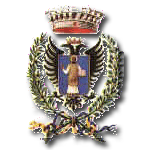
 Translate
Translate
-
* News
- - Agira 2018, 75 years later
- - Agira 2013, 70 years later
- - Gallery of ceremony 2013
- - Operation Husky 2013
- * Students' Contribute
- * About Us
- * Visitor's Book
- * Collaborators
- * Canadian Battles
- * Italian Defensive Positions
- * Allied Forces
- * Historical Movies
- Historical Information
- Historical Maps
- * Bibliography
- Biographies
- * Catania War Cemetery
- * Moro River War Cemetery
- * Syracuse War Cemetery




Agira Canadian War Cemetery lies in the Commune of Agira, Province of Enna, in the centre of Sicily. From the autostrada A19, Catania-Palermo, take the exit to Catenanuova. Follow signposts to Regalbuto, then pass Regalbuto, going in the direction of Agira. The Cemetery is then signposted about 12 kilometres from Regalbuto. Alternatively, leave the A19 at Agira and the cemetery can be seen from this exit. Cemetery address: Contrada Pennino Buterno, 2 - 94011, Agira (EN), Sicily. GPS Co-ordinates: Latitude: 37.6549115, Longitude: 14.55086
48th Highlanders of Canada, R.C.I.C.: 44
4th Princess Louise Dragoon Guards, R.C.A.C.: 3
Calgary Regiment, R.C.A.C.: 1
Carleton and York Regiment, R.C.I.C.: 34
Hastings and Prince Edward Regiment, R.C.I.C.: 33
Lorne Scots (Peel, Dufferin and Halton Regiment), R.C.I.C.: 2
Loyal Edmonton Regiment, R.C.I.C.: 46
Ontario Regiment, R.C.A.C.: 2
Princess Patricia's Canadian Light Infantry, R.C.I.C.: 29
Royal 22e Regiment: 1
Royal 22e Regiment, R.C.I.C.: 38
Royal Canadian Air Force: 13
Royal Canadian Army Medical Corps: 7
Royal Canadian Army Service Corps: 7
Royal Canadian Artillery: 36
Royal Canadian Corps of Signals: 8
Royal Canadian Dragoons, R.C.A.C.: 8
Royal Canadian Engineers: 15
Royal Canadian Ordnance Corps: 6
Royal Canadian Regiment: 33
Saskatoon Light Infantry (M.G.), R.C.I.C.: 10
Seaforth Highlanders of Canada: 57
Three Rivers Regiment, R.C.A.C.: 18
West Nova Scotia Regiment, R.C.I.C.: 33
Unknow War Dead: 6

In memory of their sacrifice.
The Allied invasion of Sicily, codenamed Operation Husky, began on the night of 9-10 July 1943, and ended 17 August. It was a major World War II campaign, in which the Allies took Sicily from the Axis (Italy and Nazi Germany).
It was a large scale amphibious and airborne operation, followed by six weeks of land combat.
It became a baptism of fire for 1st Canadian Infantry Division and 1st Canadian Army Tank Brigade.
On July 10, 1943, several thousand Canadian soldiers landed on beaches on Sicily's southeast coast. Overcoming light resistance on landing, they began a tough march through the mountainous terrain of central Sicily in debilitating heat. Their first serious fighting came when they met entrenched Germans in the centre of the island who contested every metre of ground until the withdraw to the Italian mainland to fight again. The names of Leonforte, Assoro, Agira, Regalbuto, and Etna resound in the memories of the Canadians who fought there.
It was an arduous campaign, fought on hot, dusty countryside, devoid of shade and plagued with malaria.
Operation Husky was an unprecedented joint and combined operational achievement comparable in scale and complexity to the invasion of Normandy in 1944. Seven separate army divisions sailed from ports in the United States, Scotland, and North Africa to converge off Malta before turning north to Sicily. Two airborne divisions flew in from Tunisian airfields the night before the landings. Three hundred fighting vessels protected 2,000 other ships and landing craft. They were guarded from above by a vast armada of Allied aircraft. Their common objectives were to free Mediterranean shipping lanes and drive Italy from the war...view details
On July 10, 1943, as Operation Husky, the invasion of the island of Sicily unfolded, the men of the First Canadian Division sallied forth. The Division was made up on the First Brigade (the Royal Canadian Regiment, the 48th Highlanders of Canada and the Hastings and Prince Edward Regiment), the Second Brigade (the Princess Patricia's Canadian Light Infantry, the Loyal Edmonton Regiment and the Seaforth Highlanders of Canada), and the Third Brigade (the Royal 22e Regiment, the Carleton and York Regiment and the West Nova Scotia Highlanders). The infantry brigades were supported by the the Royal Canadian Horse Artillery, the Second Field Regiment, and the Third Field Regiment, respectively. In addition, the Saskatoon Light Infantry (Machine Gun), 1st Anti-Tank Regiment, 2nd Light Anti-Tank Regiment and the 4th Reconnaissance Regiment (4th Princess Louise Dragoon Guards). Armoured support came from the 1st Canadian Armoured Brigade made up of the Ontario Regiment, the Calgary Regiment and the Three Rivers Regiment.All the infantry brigades were made up on one Permanent force unit and two NPAM (Non-Permanent Army Militia) regiments. And the battalions represented all parts of the country...view details


